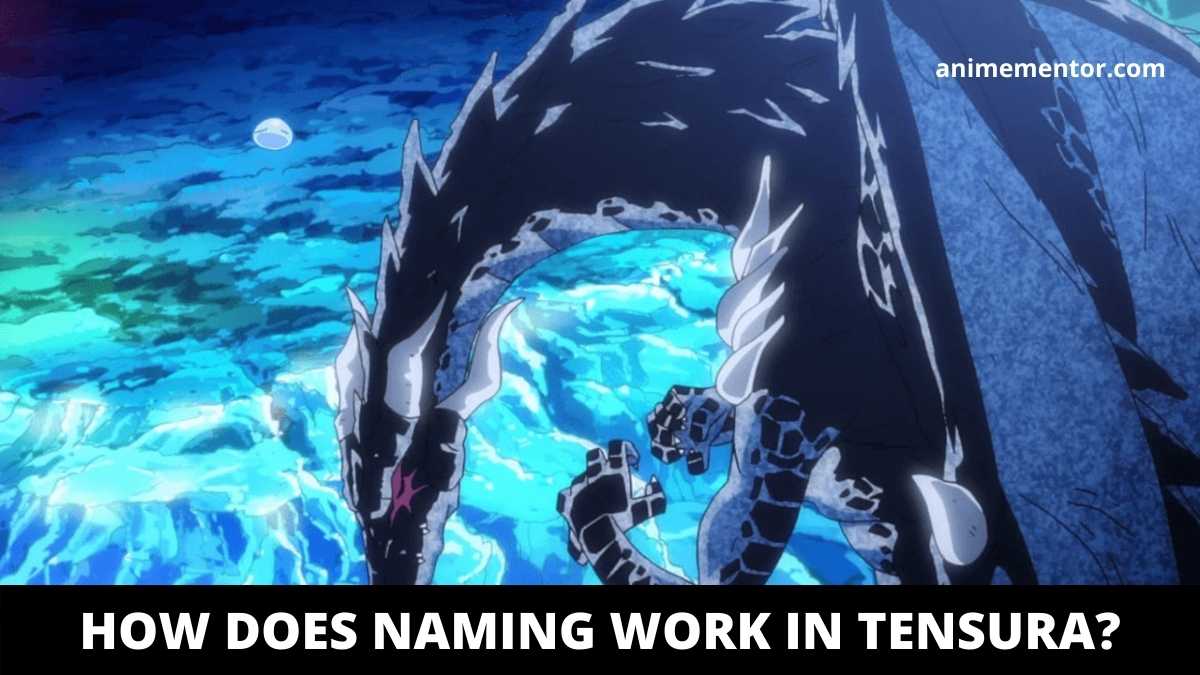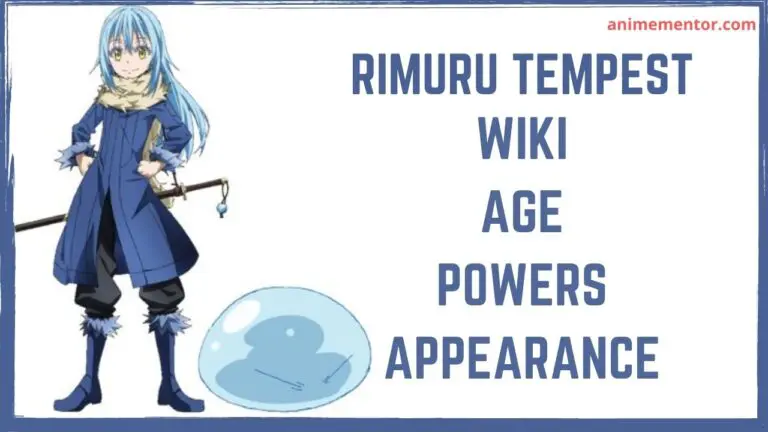In the world of – That Time I got Reincarnated as a Slime, names are fundamental properties alongside the Titles and Divine Protections.
Naming schemes work differently for non-humans and humans. The process of naming is established to maintain a master-servant relation.
Later in the show, it is shown that the naming scheme is much more adaptable, individuals of the same status name may each other, and they may self-name or name other subordinates as well.
All in all, if proper rules are set up beforehand, naming can be useful in the long run.
Let’s look at them one by one.
How does Naming work for Humans in Tensura?

Across the whole story, the Human Naming system looks useless and doesn’t add any value just like human titles. They are only used for their recognition and personal identity.
In the human world and in the manner in which human society works, they’re named as soon as they are born by their guardians or anyone related to them.
In contrast, the monsters are unnamed at birth and are later named which increases their status.
This rule seems unknown to humans because of their conventional naming style, it is also very unlikely that humans’ status will increase based on their name as it does for Monsters.
If this is the case, it explains why the human race is weak. Weak humans name other humans and the tradition goes on which results in the weakening of the entire race.
How does Naming work for Monsters in – That Time I got Reincarnated as a Slime?
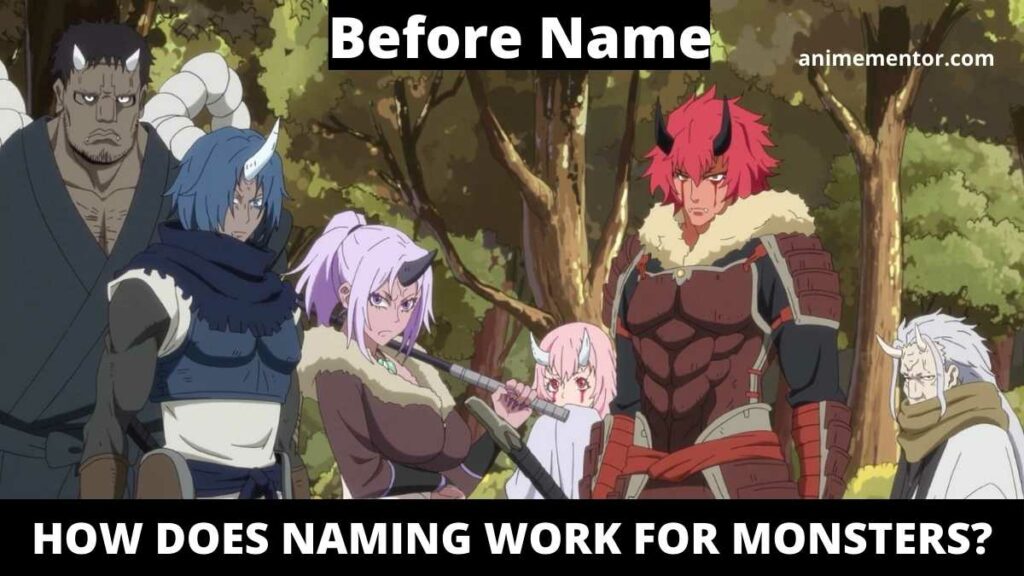
Names are given to monsters with no name from someone who is very skilled and has high magical abilities.
A monster with a name has higher status, more power, and also has the ability to evolve at times.
The stronger the person who is naming the greater the boost to the one who is named and the higher jump in evolution and the more magicules will be transferred from the namer.
For reference when Rimuru named Rigur, a Goblin. He explained his brother was also named by someone but his evolution was much inferior.
Furthermore, when Rimuru named Souei, Ogres described that six Kijin appearing at that exact time is an unparalleled event because Kijin’s Ogre’s evolution state can only be achieved only after thousands of years.
Additionally, Ogres are naturally higher than Goblins and it took 6 Ogres to force Rimuru to enter sleep mode.
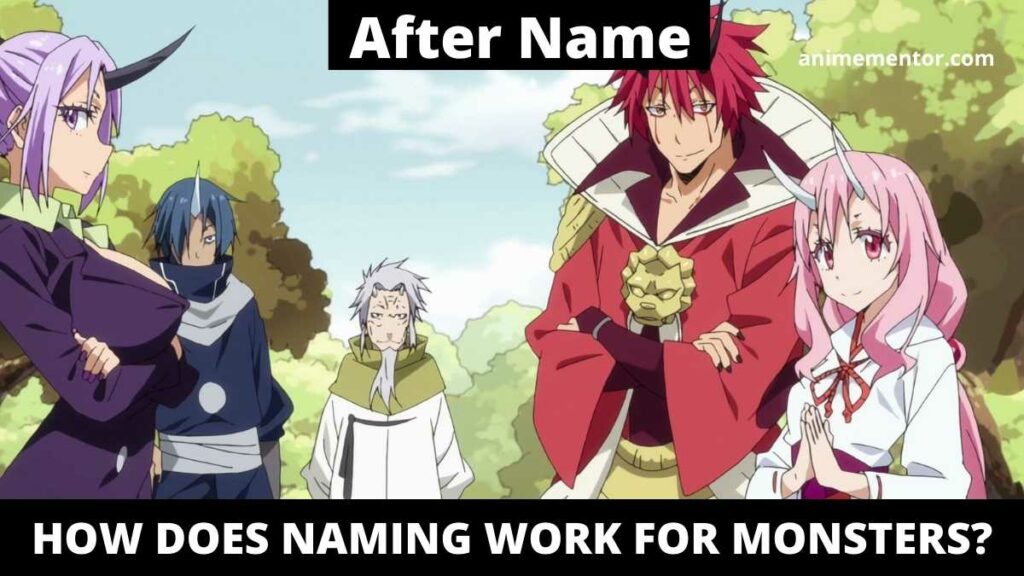
Naming an unnamed monster requires magicules so most stay away from naming others as the one giving names can lose their magical ability permanently which will in turn decrease the namer’s magical ability. Rarely but it is possible that the individual can die instantly due to loss of magicules.
Luckily, Rimuru managed to survive by recovering his lost energy from Veldora who was sealed inside him in his sleep mode.
As mentioned naming is a rare happening, so most of the monsters stay unnamed in their lifespan. The monsters who get named consider the namer their king or even refer to them as Gods. Just in case the if namer dies the monster’s status disappears.
If any demon tells his real name, it can be used to manipulate it. Therefore they refrain to introduce themselves by their real name.
Others Naming Systems
There are people or communities like Demi-Humans who have names but don’t have a big change in their evolution. Like Kajin, Elves, Treyni, and others. They follow the same naming schemes as humans so it is irrelevant and of no use at all other than their recognition.
Additionally, others like Dagrule, Luminous, Dino, Ramiris, and 4 true dragons have names but no one has named them. There is a possibility that Veldanava named the three of them and his siblings. There is no explanation why he did not name Guy after giving him a big task similar to Dino and Ramiris. Also, it is unknown who named Veldanava.
It is impossible that someone gave Veldanva a name so maybe he named himself. There is also a naming system where individuals can name themselves. Such a name will also resemble the characteristics of the human naming system.
For the first time, the concept of self-naming was seen with Orthos, a demon who named himself after his disgrace.
Equal Status Naming
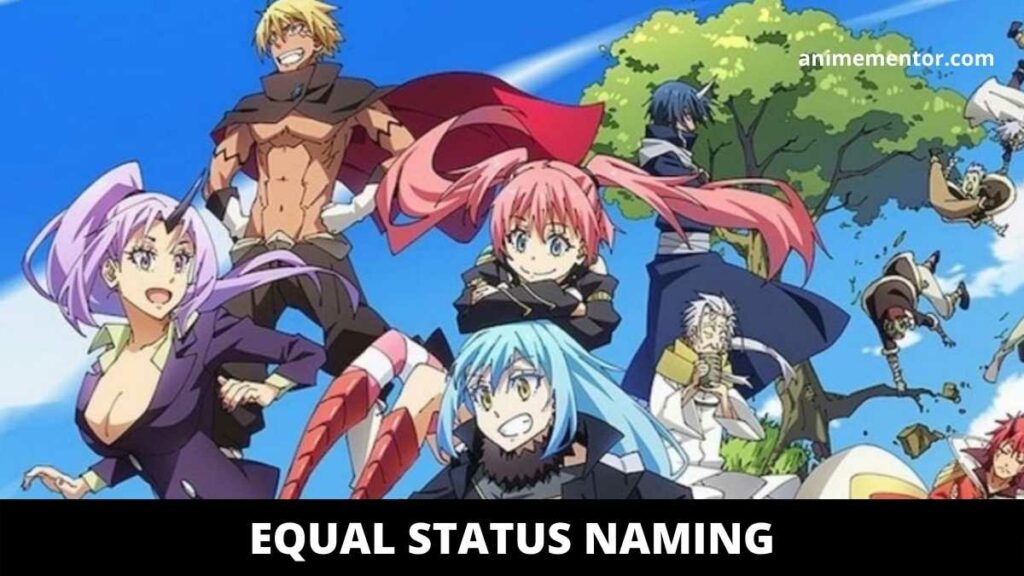
The first time this naming scheme was introduced was when Rimuru gave Tempest his and Veldora’s last name. When two people share the same surname it represents that their social position and skills are equal, it doesn’t mean they are masters or servants.
This sharing of surnames has a major influence on the growth and evolution and it also means that both parties have high liberty of using each other’s abilities. If any party doesn’t reject the proposal of using energy, the other name bearer can use the full power of the latter.
This was shown for the first time while using Velora Sword Rimuru lightly flicked his wrist but the power output from the sword was very high. Rimuru didn’t mention anything to Veldora about power so Veldora put too much into it.
If Rimuru and Veldora didn’t share the same name Rimuru’s growth wouldn’t be this exceptional, since in a master-servant relationship a servant stays a servant no matter how fast they try to grow.
Rimuru is recognized as the same as Veldora so it means that he was given the same status as a True Dragon, for this he had to become as strong as possible to live up to the “True Dragon” designation.
Naming Other Subordinates

The flexibility related to naming is actually shown a bit later in the show. When Ramiris starts living in Tempest he becomes manager of Labyrinth City. She and Rimuru shared ruling on some individuals like Euros, Notos, Boreas, and Zephyrus.
Beretta was called to be ruled under him when she made a 100-year contract with Ramiris. But Ramiris noticed that Rimuru already have plenty of powerful subordinates under his wing and thus she denied Bretta to go to Rimuru.
Rimuru transferred and made Ramiris a primary master of Bretta and a secondary master to himself meaning that Bretta will serve Ramiris first. So it shows that even if Rimuru is not the true master but if he had a soul corridor established he can evolve anyone.

